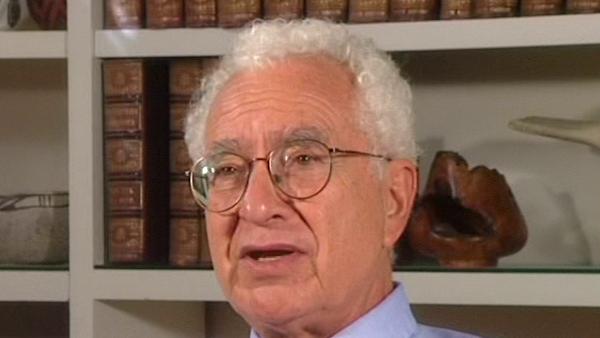NEXT STORY

The Sakata model. A field theory model
RELATED STORIES

NEXT STORY

The Sakata model. A field theory model
RELATED STORIES


|
Views | Duration | |
|---|---|---|---|
| 81. Electromagnetism, PCAC and global symmetry | 903 | 03:23 | |
| 82. The Stanford meeting of The American Physical Society | 903 | 01:55 | |
| 83. Muon and electron neutrinos | 939 | 01:12 | |
| 84. Collaborating with Feynman | 2962 | 02:40 | |
| 85. Global symmetry. Yang-Mill's theory. Phil Anderson | 1347 | 03:21 | |
| 86. Symmetry schemes | 825 | 03:16 | |
| 87. The Sakata model. A field theory model | 1181 | 02:28 | |
| 88. London and Paris. Partially conserved axial vector current | 783 | 02:31 | |
| 89. The Sigma model | 838 | 00:59 | |
| 90. Sheldon Glashow. The SU(2) times U1 theory | 1247 | 04:10 |


I was thinking of charges in several different ways. I was thinking of charges forming closed systems under commutation. I didn't realize that they were Lie algebras until a little bit later, but I did understand forming closed systems under commutation, and these charges were then… had different origins or different character depending on the problem. First of all, there were the charges that we mentioned a few minutes ago that occur in the currents of the… that… that are integrals of the… of the time components of the parts of the weak current. So we have isotopic spin, you have a pseudo-scalar analogue of isotopic spin, then you have a strangeness changing term and a strangeness changing pseudo-scalar charge. And commuting all of these you get some sort of closed system. What was it? Second question was: what is the Yang-Mills theory involved in the weak interactions; and what is the Yang-Mills theory involved in the strong interactions; what are their sets of charges? And the third is: what are the symmetries, the broken symmetries of the strongly interacting particles that allow us to go beyond isotopic spin in classifying the hadrons, so that hadrons are classified into super multiplets that go beyond the isotopic spin multiplets. Well, these were three closely related uses of–four actually, four closely related uses of various charge operators and I didn't somehow take the trouble to sort out the logical relationships among all these different things; I just hoped for an insight of some sort that would clarify it all.
But these were really four slightly different questions: what is the closed system of these charges for the weak current, the different parts of the weak current? What is… is the set of charges for the Yang-Mills theory for the strong interaction? What is the set of charges for the Yang-Mills theory for the weak interaction? And finally: what is the set of operators that give a higher symmetry for classifying the super multiplets among the hadrons? Well, I played with all of those and I played with them without–unfortunately without—using the concept of Lie algebras and Lie groups, which would have been immensely useful and to which I had been exposed, both in mathematics classes at Yale when I took graduate courses as an undergraduate, and also in Racah's lectures. But I didn't remember any of that, so I just fiddled around by hand with closed systems of commutation, of commuting operators; systems closed under commutation, working them out by hand and trying to find some scheme that would somehow answer all these four questions with various charges.
New York-born physicist Murray Gell-Mann (1929-2019) was known for his creation of the eightfold way, an ordering system for subatomic particles, comparable to the periodic table. His discovery of the omega-minus particle filled a gap in the system, brought the theory wide acceptance and led to Gell-Mann's winning the Nobel Prize in Physics in 1969.
Title: Symmetry schemes
Listeners: Geoffrey West
Geoffrey West is a Staff Member, Fellow, and Program Manager for High Energy Physics at Los Alamos National Laboratory. He is also a member of The Santa Fe Institute. He is a native of England and was educated at Cambridge University (B.A. 1961). He received his Ph.D. from Stanford University in 1966 followed by post-doctoral appointments at Cornell and Harvard Universities. He returned to Stanford as a faculty member in 1970. He left to build and lead the Theoretical High Energy Physics Group at Los Alamos. He has numerous scientific publications including the editing of three books. His primary interest has been in fundamental questions in Physics, especially those concerning the elementary particles and their interactions. His long-term fascination in general scaling phenomena grew out of his work on scaling in quantum chromodynamics and the unification of all forces of nature. In 1996 this evolved into the highly productive collaboration with James Brown and Brian Enquist on the origin of allometric scaling laws in biology and the development of realistic quantitative models that analyse the influence of size on the structural and functional design of organisms.
Tags: Yale University, Guilio Racah
Duration: 3 minutes, 17 seconds
Date story recorded: October 1997
Date story went live: 24 January 2008